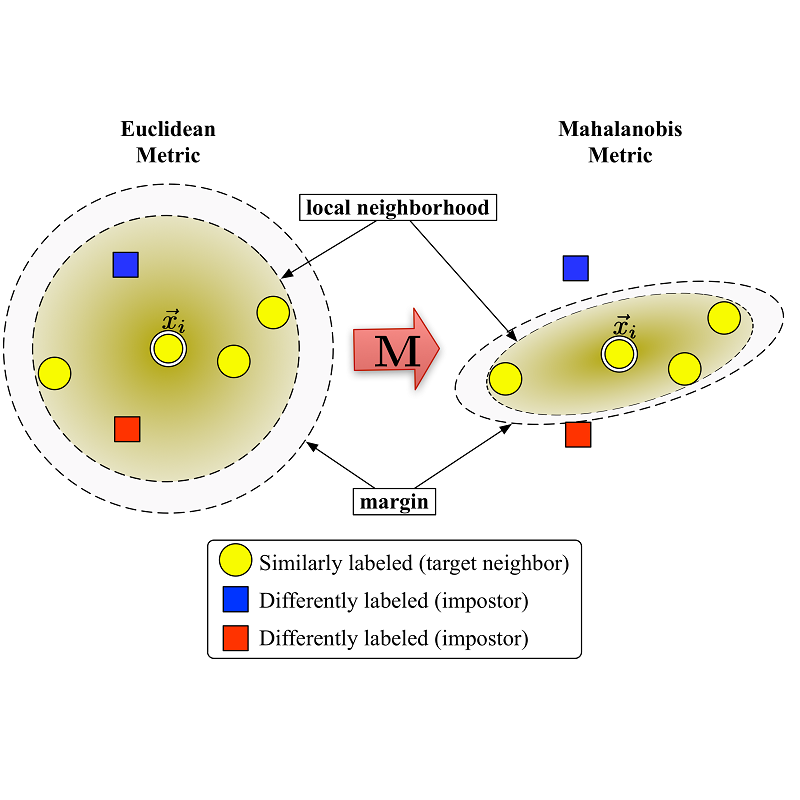We propose a manifold matching approach to generative models which includes a distribution generator (or data generator) and a metric generator. In our framework, we view the real data set as some manifold embedded in a high-dimensional Euclidean space. The distribution generator aims at generating samples that follow some distribution condensed around the real data manifold. It is achieved by matching two sets of points using their geometric shape descriptors, such as centroid and $p$-diameter, with learned distance metric; the metric generator utilizes both real data and generated samples to learn a distance metric which is close to some intrinsic geodesic distance on the real data manifold. The produced distance metric is further used for manifold matching. The two networks are learned simultaneously during the training process. We apply the approach on both unsupervised and supervised learning tasks: in unconditional image generation task, the proposed method obtains competitive results compared with existing generative models; in super-resolution task, we incorporate the framework in perception-based models and improve visual qualities by producing samples with more natural textures. Experiments and analysis demonstrate the feasibility and effectiveness of the proposed framework.
翻译:我们建议对基因模型采取多重匹配方法,其中包括一个分布式发电机(或数据生成器)和一个公制生成器。 在我们的框架里,我们把真实数据集视为嵌入高维欧几里德空间的一些元体。分布式生成器旨在生成一些分布式的样品,这些样品围绕真实数据元体进行某些分布式的压缩。通过利用两组几何形状描述仪,例如中子和美元-直径仪,用学习的距离度量度仪,对两组点进行匹配,例如中子和美元-直径仪,用学习的距离度量计;衡量式生成器同时使用真实数据和生成的样品,学习距离度量度,这与真实数据元体上的某些内在大地距离相近。生成的距离度量度度度测量器被进一步用于多重匹配。两个网络在培训过程中同时学习。我们在未受监督和监督的学习任务上都采用这一方法:在无条件的图像生成任务中,拟议方法获得与现有基因化模型相比的竞争结果;在超分辨率任务中,我们将框架纳入基于感知的模型,并通过用更自然质质质质的样本来提高视觉质量质量。实验和分析展示了拟议框架的可行性和有效性。实验显示可行性和有效性。





